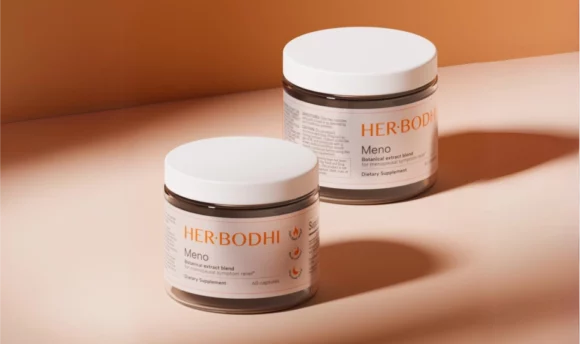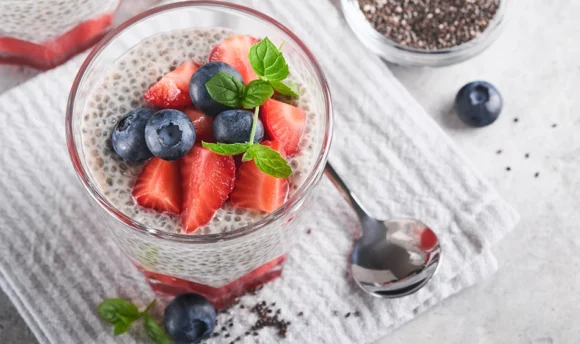Types of Probiotics: Everything You Need to Know
Dive into the world of probiotics and discover all you need to know about the microorganisms that can do wonders for your gut health.

Within your body resides a complex ecosystem, housing hundreds of different types of both good and harmful bacteria. When there are more bad bacteria, the delicate balance of this system is disrupted, and you may end up with an infection or digestive problems.
Probiotics, found in foods and supplements, can bring in good bacteria to restore that balance. They also offer many other health benefits, especially in supporting your gut and boosting your immune system.
However, the world of probiotics can be puzzling because of the different types, genera, and species. We’re here to clarify that and help you understand the most common types of probiotics so you can cultivate a balanced microbiome. But first, let’s start from the basics.
What Are Probiotics?
Probiotics are live microorganisms present in the human body that support gut health and improve microbial balance. In other words, they’re beneficial bacteria that offer health benefits to the host when administered in adequate amounts.
Not only do probiotics ensure a healthy balance of microbes, but they can also enhance immune function, improve digestion, boost skin health, help with weight loss, and reduce the risk of several diseases.
How to Read Probiotic Names
The names of probiotics contain a mix of words, letters, and numbers, creating a puzzle for many. Understanding these names is key to picking the best probiotic based on your needs.
Each probiotic name has three different parts, denoting genus, species, and strain.
Genus
The genus refers to a broad category that groups together many closely related probiotic species. It means that the species within a single genus share common traits and characteristics.
For example, the largest genus within the lactic acid bacteria group, Lactobacillus, contains multiple species, such as Lactobacillus rhamnosus, Lactobacillus casei, and Lactobacillus acidophilus.
Species
Species represent a group of organisms that not only share common traits and characteristics but can also interbreed to produce fertile offspring. Each probiotic species within a genus is unique and distinct.
For instance, the L. acidophilus in the Lactobacillus genus is known for its ability to thrive in acidic environments.
Strain
Species further have subdivisions called probiotic strains. A probiotic strain exhibits unique phenotypic or genetic traits and characteristics, allowing it to perform distinct functions.
For instance, L. acidophilus is divided into multiple strains, including L. acidophilus LA-1 and L. acidophilus DDS-1, each with different traits.
Now, if we take the example of Lactobacillus acidophilus DDS-1, then Lactobacillus is the genus, acidophilus is the species, and DDS-1 is the strain.
What Are the Most Common Types of Probiotics?
Probiotics, the good bacteria that support digestive well-being, come in various types. Let’s navigate through the common genera and species that populate this world of microorganisms.
Genera of common probiotics
The most studied and commonly consumed types of probiotics belong to these genera:
Lactobacilli: The Lactobacilli probiotic bacteria are known for producing lactase and lactic acid. The former breaks down milk sugar and lactose, and the latter helps the body in controlling harmful bacteria.
Additionally, Lactobacilli also increase the absorption of minerals in the body and improve muscle growth. These bacteria are naturally found in the small intestine, mouth, and vagina.
Bifidobacteria: The Bifidobacteria probiotic genus is most commonly used in dietary supplements and foods. It’s found in the intestines of humans and many other animals and is also widespread in the environment.
This genus of probiotics is believed to support the immune system, increase lactose digestion, and minimize the growth of harmful bacteria in the gut.
Saccharomyces: Saccharomyces groups together some of the most well-studied probiotic species, including Saccharomyces boulardii. This species is a tropical yeast known for its common use in therapy and prevention of gastrointestinal disorders.
Another member of this genus, Saccharomyces cerevisiae, is best known for its indispensable roles in baking and brewing. While not typically a resident microorganism in healthy humans, it can be present in the digestive tract, oral cavity, skin, and other areas under specific conditions.
It has been researched for its potential in treating symptoms of immune-compromised diseases, cardiovascular disorders, and respiratory diseases.
Soil-based probiotics: As the name implies, soil-based probiotics are microbial strains found typically in soil, but they’re also present in water, air, GI tracts of humans, and fermented foods.
They belong to the Bacillus genus, which groups multiple probiotic species, such as B. coagulans, B. clausii, B. subtilis, and B. indicus.
According to research, the health benefits that soil-based probiotics offer include improving diarrhea, bloating, abdominal pain, and stool consistency, especially in people suffering from irritable bowel syndrome.
Species of common probiotics
Harvard University states that there are over 500 different species of bacteria that live in the human intestine. However, only a handful of them are researched extensively for their health benefits. Let’s delve into some of the most commonly used options.
L. acidophilus: L. acidophilus is naturally found in the small intestine and vagina, and you can consume it through fermented milk products. It helps with digestion, reduces the symptoms of bacterial infections in the vagina, and can decrease LDL cholesterol levels.
L. casei: This probiotic species is found in the GI tract, mouth, and vagina and can be acquired from some fermented foods like yogurt and cheese. It helps you cope with antibiotic-associated diarrhea and has been studied for its potential role in suppressing the growth of colon cancer cells.
L. reuteri: L. reuteri species is also naturally found in the human mouth and intestines. According to research, it fights off harmful bacteria in the mouth that lead to tooth decay and helps maintain a balance of beneficial bacteria in the gut.
L. rhamnosus: L. rhamnosus typically exists in the digestive system and vaginal environment. Multiple strains of this species offer health benefits specifically for women, as they have antibacterial and antifungal properties to maintain vaginal health. Additionally, it can also help with diarrhea, whether it’s due to antibiotics or an infection.
B. bifidum: This probiotic is found in the human GI tract and is used for culturing fermented milk products. It’s one of the most well-studied species of probiotics and can help with infectious diarrhea, colon cancer, and symptoms of irritable bowel syndrome.
B. lactis: B. lactis probiotics are naturally found in the large intestine of most mammals, including humans. They’re also present in fermented foods and are commonly used in the production of buttermilk, cottage cheese, and yogurt.
Research shows that B. lactis maintains healthy intestinal microbiota, supports gut health, and increases the proportion of beneficial bacteria like Bacteroides, particularly in young individuals.
B. animalis: This species is found in the GI tracts of most mammals, including humans, and can be consumed through dairy products. It helps with digestion, combats food-borne bacteria, and can boost the human immune system.
B. longum: B. longum is one of the most well-studied species of the Bifidobacteria genus that is found in the human gut. It helps your body break down carbohydrates, improve symptoms of IBS, and colonize the microbial community of newborns. In addition, it can also reduce intestinal inflammation and pathogenic bacteria in breastfed infants.
B. breve: This species of probiotic lives in the human digestive tract and vagina. It helps your body make plant fiber digestible by breaking it down, ferments sugar to absorb nutrients efficiently, treats gastrointestinal disorders, and combats yeast or infection-causing bacteria.
Saccharomyces boulardii: Saccharomyces boulardii is a tropical yeast that is thought to be first isolated from mangosteen fruit and lychee.
It has anti-pathogenic properties and can help with antibiotic-associated diarrhea in both adults and kids. Research shows that Saccharomyces boulardii can also reduce the symptoms of inflammatory bowel disease.
Which Type of Probiotic Should You Take?
When it comes to the type of probiotic, it depends on what your body requires. Not all probiotics are the same, and different strains offer distinct benefits. In other words, the choice should align with what your body may lack or need to achieve optimal health.
The best way to increase your probiotic intake is to make changes to your diet. Some common probiotic foods you can consider adding to your diet plan include yogurt, kimchi, miso, pickles, cultured cottage cheese, natto, and fermented olives.
But if you find it challenging to eat these food options, you can opt for probiotic supplements. We recommend you choose a supplement that has at least 1 billion CFU (Colony-Forming Units), containing Bifidobacterium, Lactobacillus, Saccharomyces boulardii, or Bacillus – all well-researched probiotic genera.
Nonetheless, before making changes to your diet or taking a probiotic supplement, make sure you consult with your doctor. A health professional will help you understand your individual needs and determine whether probiotics are necessary and, if so, which ones would be most beneficial.
A Word From Our RD


Probiotics wield a pivotal influence in nurturing a harmonious gut microbiome, an essential player in overall well-being. Their main benefits include improved digestion, enhanced immune function, and potential relief from issues like diarrhea and bloating.
To maximize benefits, I recommend you opt for a diverse range of probiotic-rich foods such as yogurt, kimchi, and fermented olives. If you’re considering supplements, choose something that contains well-researched genera like Bifidobacterium, Lactobacillus, Saccharomyces boulardii, or Bacillus, each with distinct advantages.
Make sure to consult with your healthcare provider before any dietary changes or supplement use. This is the most important advice any medical professional can give you because individual needs vary, and professional guidance in picking the right probiotic ensures optimal results for your unique health profile.
I would also recommend you be mindful of signs such as changes in digestion or overall well-being to gauge probiotic effectiveness. Lastly, avoid consuming probiotics in excess, as it can lead to digestive issues like bloating and stomach pain.
FAQs
While there are many different types of probiotics, the two most common and well-studied genera of probiotics are Lactobacilli and Bifidobacteria.
The best type of probiotic depends on your specific needs because different probiotic strains offer different benefits to your body.
No, probiotics are generally safe, but some individuals may experience allergic reactions. Those who are immunocompromised or seriously ill should consult their doctors before making dietary changes.
Conclusion
The delicate balance of your gut ecosystem plays a vital role in your overall well-being, and probiotics can help you achieve that. That’s why understanding different types of probiotics is important, as it can help you make choices that support a thriving gut, leading to a healthier life.
To summarize, the most common and well-researched types of probiotics include Lactobacillus, Bifidobacterium, Saccharomyces boulardii, and Bacillus. Only a few probiotic species, such as the ones in this guide, have been extensively studied, so going with them is a smart option.
Remember, the choice of probiotics should align with your specific health needs. Therefore, consulting with your doctor is crucial before making any significant dietary changes or adding a probiotic supplement to your daily routine.

















































 Select your language:
Select your language: 








